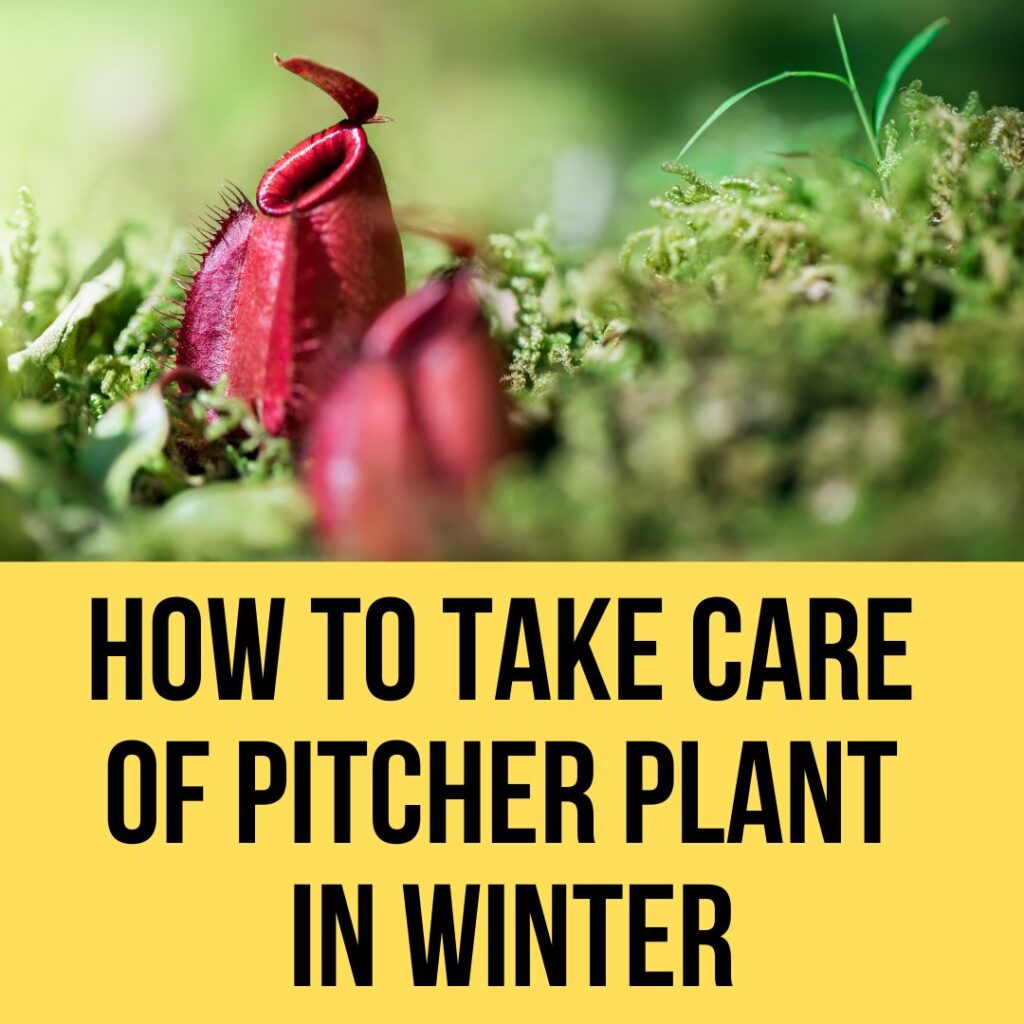If you have a pitcher plant, you are probably acquainted with its appearance, which consists of glandular leaves that have the appearance of wide mouths directed toward the sky, simply waiting for insects to come and consume them. They have a high tolerance for heat and some degree of cold hardiness, although they cannot survive temperatures below USDA zone 7. Because of their need for insects for food, they have certain requirements to be met in order to make it through the winter.
Do you have a pitcher plant that seems to be struggling in the winter? If so, you’re not alone. Pitcher plants are usually hardy, but they can suffer in cold climates. Here we shall tell you how to take care of pitcher plant in winter.
Pitcher plants are a kind of plant that thrives in wet environments and are often cultivated as part of a water garden or along the edge of a water feature. They are a kind of carnivorous plant that belongs to the genus Sarracenia, which has a total of 15 distinct types.
These are the types of plants that may meet a portion of their nutritional requirements by luring and capturing insects. You are hoping that your pitcher plant will remain healthy over the winter, so let’s have a conversation about how to ensure this outcome.

Can pitcher plants overwinter well if they are kept indoors?
Any type of pitcher plant may thrive in the protected environment of a greenhouse if the circumstances are properly managed. If you can provide enough air circulation, humidity, and a warm environment, you may be able to bring smaller types of plants inside for the winter. How to Care for Pitcher Plants in the Winter Plants that are hardy in USDA zone 6 are used to experiencing brief periods of cold temperatures.
The time of cold that is necessary for the pitcher plant to enter dormancy is followed by warm temperatures that cause it to emerge from hibernation. It is essential for all species of Sarracenia to have the necessity of being chilled in order to communicate when it is time to start growing again. When temperatures drop to dangerously low levels, protecting plant roots by applying a thick layer of mulch around the base of the plants is recommended.
The ice has to be broken and the water trays need to be kept filled if you have any types that are growing in the water. To properly care for pitcher plants over the winter in zones with cooler temperatures, you will need to move them inside.
Species of S. purpurea that are grown in containers may be kept outside if they are placed in a protected area. Every other kind of plant should be moved to a shady, cool place where it is covered, such as a garage or a basement that is not heated. When caring for less hardy species of pitcher plant throughout the winter, reduce the amount of water given to the plant and do not fertilize it.
Is It Possible for a Pitcher Plant to Overcome the Winter Indoors?
This is an excellent point to bring up. To successfully overwinter pitcher plants, you must create an environment that is analogous to their natural habitat. This is true for any plant. Because of this, each species will need a little different temperature range on average, a longer or shorter period of dormancy, and a slightly different location and set of growth circumstances.
It may be challenging to fulfil all of these requirements in the confines of the home setting. On the other hand, since the plants will be dormant for three to four months, their nutritional requirements will be reduced.
Reduce the quantity of water that is given to potted plants, place them in a location with low light and temperatures that are below 60 degrees Fahrenheit (16 degrees Celsius), wait three months, and then gradually expose the plant to environments with increasing levels of light and heat.
How to Take Care of Pitcher Plant in winter?
During the Winter Plants that are hardy in the USDA zone, 6 may withstand brief exposure to temperatures below freezing. The pitcher plant will go into dormancy more easily as a result of the cold. The plant will wake up from its state of dormancy as soon as the temperature begins to rise.
Dormancy must be induced by a period of cooler weather, which is essential for all pitcher plant kinds. When it is really cold outdoors, the plants that are grown outside will need a substantial layer of mulch to protect the plant roots. Those that are growing in water will need to be maintained in full water trays, and you will need to make sure the ice is broken up often.

The Reasons Why Fertilization Is So Crucial
Creating unique traps out of leaves might require a significant amount of effort. The traps are unable to photosynthesize in an effective manner. Therefore, the plant receives a lower amount of energy from the sun, and it must use a greater amount of energy than other plants do when they set their traps.
Even with the addition of fertilizer, pitcher plants are unable to live off of photosynthesis alone. Therefore, they will need a source from which to get the bugs. This may require gathering or purchasing insects and feeding them to the plant in order to get the desired effect. Because of all of these factors, it may be challenging to care for pitcher plants when they are kept as houseplants.
Dormancy
The period of dormancy refers to the time when the plant ceases its normal processes of growth and development. When plants are grown in areas with lower temperatures, they often “die back,” which gives the impression that they have perished. The saving of energy is the primary objective of dormancy. A great number of plants are able to enter it as a result of climatic circumstances, such as low temperatures, that would otherwise restrict the plant’s capacity to operate and produce its own sustenance.
Wintering Inside
When taken indoors, pitcher plants should be positioned in a spot that is covered and kept at a cool temperature. An unheated garage or basement with temps lower than 60 degrees is the perfect location for this project. During this time period, the plant will need less amount of water and will not require any fertilizing. Because the amount of time required will change according to the variety, it is essential to have accurate information on the variety in question as well as their natural cycle of development and dormancy.
During their growth stages in winter, the plants need air that is warm, and wet and has a humidity level of at least 30% at all times.
- They need soil that is acidic, such as peat.
- In order to establish the growth-dormancy cycle, you will need to:
- Transfer the plant to a location that has lower light levels and colder temps.
- Take care of it for the first three to four months while it is in its new habitat.
During this period, you should use less water and less fertilizer. Following a time of dormancy, the plant can tolerate progressively increasing amounts of light, heat, and water. It’s possible that fertilization is required to stimulate growth.
Parting Thoughts
To summarize, pitcher plants are a classic example of carnivorous plants and are a lot of fun to cultivate. However, in order for these plants to live, they need periods of dormancy since they are not able to withstand very cold temperatures or extended periods when the temperature is below freezing. Whether they are grown inside or outdoors, they must have adequate levels of humidity and soil conditions.
Plants that are native to colder climates will need to be taken inside for the winter, where they will need to be kept cool enough to enter a state of dormancy that will allow them to survive the winter. Pitcher plants do have certain requirements that must be met. Growing them, on the other hand, may be a lot of fun if you are ready to put in the necessary effort.
Thanks for stopping by! Happy Reading!!!
